SXSW 2024 Roundup: Challenges and Advice From The Filmmakers (Pt. 1)
Check out the biggest challenges and best advice from the acclaimed filmmakers of SXSW 2024.
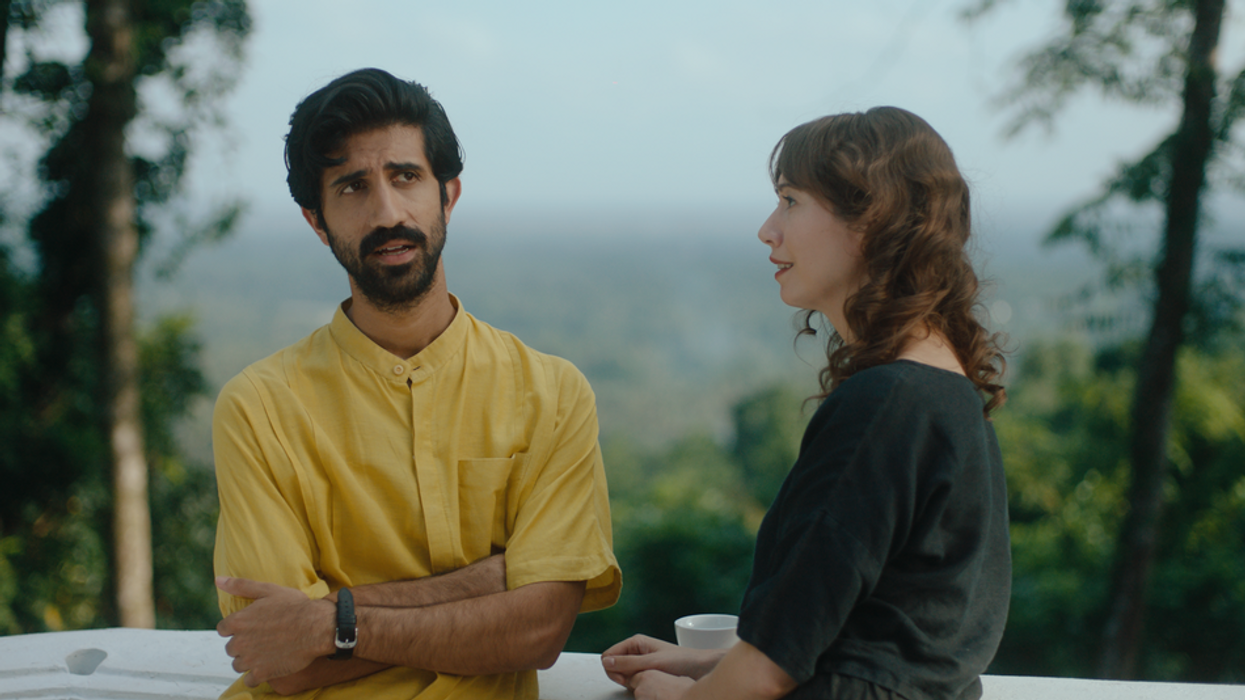
Ben and Suzanne, A Reunion in 4 Parts
SXSW 2024 may have wrapped up the annual film and arts festival last week, but it's never too late to learn from some of the most creative minds and up-and-coming talents to watch in the industry.
Please enjoy our filmmaker roundup below of the biggest challenges and best advice from the filmmakers of SXSW 2024.
Editor's Note: This is one of two parts of the filmmakers who replied to our survey. Their responses have been edited for clarity and length. Enjoy!
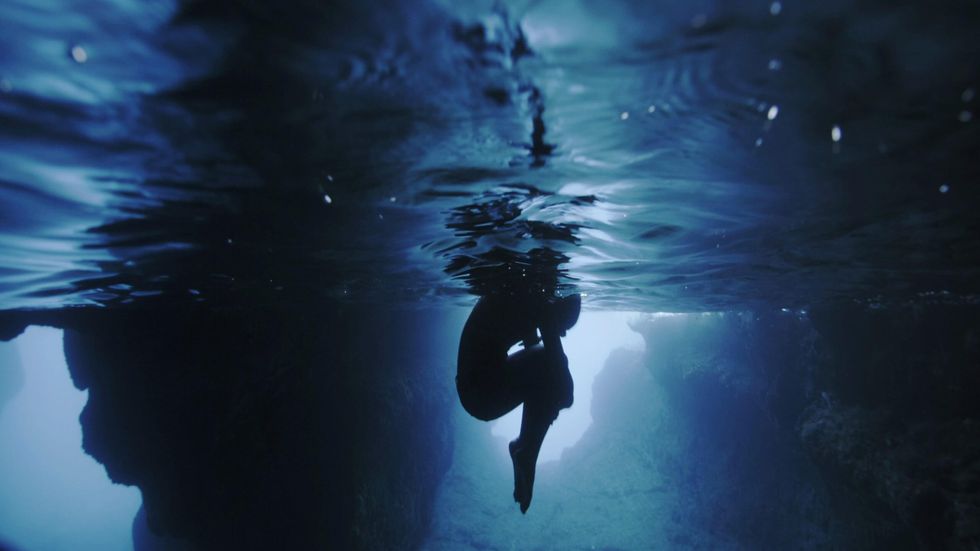
Yuqi Kang (Director), Kalina Bertin (DP) | 7 Beats Per Minute
Challenges:
Kalina - "During the Vertical Blue competition, when Jessea was aiming to break her world record, many restrictions were set around the diving rig by the organizers. These restrictions were understandable, they were there to protect the freedivers and the sacred space they need to do their magic. Covering the action of the competition, however, became a challenge. Our cameras where not granted access to the diving rig and we could only navigate a small motorless embarkation around the rig. We were extremely lucky to find a sturdy fishing kayak where our crew could operate from.
The C300 Mark II with the 70-200 mm canon lens was set up in the front end where it was operated using an easy rig. Our sound recordist sat at the back. He was authorized to set up his wireless microphones on the rig each morning before the competition began and he would use his boom pole to follow the action from the kayak. Now, navigating this kayak, was extremely tricky. Our camera assistant was in the water following instructions to direct the front of the kayak toward the action all while trying to neutralize as best he could the waves that would come in from all sides. The Red Ranger was set up on the side of Dean’s Blue Hole to capture a wider shot of the action."
Advice:
Yuqi - "It took about five years to make 7 Beats Per Minute, I've learnt and grown so much as a person and as a filmmaker while pursuing this story. From time to time, I felt the amount obstacle ahead was just too much and wondered if I had in me to push forward more. The advice I want to share with fellow aspiring independent filmmakers is to always trust your own creative intuitions and find a way to keep finding the passion within you during these inevitable hard times. Filmmaking is a collaborative process, I always try to align myself with people who are truly excited and understand my visions. On these dark days, they have also become my rock to power through this journey. I am so grateful I have the people surrounding me who help make my stories see the light."
Joy Wilkinson (Writer-Director), Cassandra Sigsgaard (Producer) | 7 KEYS
Challenges:
Joy - "The biggest production challenge is encapsulated in the title 7 Keys —we had a lot of locations, which meant a lot of unit moves, which is the opposite of what you'd choose to have on a film of this scale, many of which wisely stay in a single location. But we were committed to pulling it off and giving the full cinematic ride. Thankfully the producers were very skilled in scheduling and logistics, as well as on the creative side, and they managed to line things up so we could move smoothly through the locations (actually almost a dozen in total) in our 18-day shoot.
The Art Department also stepped up, with Production Designer Natasha Jenkins devising a cunning plan for her small team to be constantly moving ahead to prep the next place while we were fully immersed shooting in the current location. I won't say it was easy, but everything tessellated and we captured each of the 7 Keys on schedule, which I'm really proud of. It makes the film feel epic and ambitious despite its constraints, like you've been on a whirlwind tour across every level of London with Lena and Daniel."
Cassandra - "As the title suggests, the film is set across seven main locations (for each key), with a few more in-between. This was a challenge considering our very tight budget and schedule. We shot the film over 18 days, and all over London. This meant having to find some unique unit bases, including a boules club for a few days in North London, and a houseboat for the end of the shoot on the Thames, just by Battersea Power Station! It was also the heart of winter, and we wanted to avoid showing that, so had a lot of hot water bottles and warm coats just out of shot for the cast. Some of the tension on screen is definitely influenced by the cold London days and nights!"
Advice:
Joy - "Starting out as a writer, I've spent a long time waiting for projects to happen and it can be excruciatingly disempowering, as all aspiring indie filmmakers know. Stepping up to direct my shorts was empowering, but the moment I decided to direct 7 Keys myself was the kind of transformational moment that normally only happens in movies. It still took me a year to pull it all together, but from that moment on, I was constantly moving forward and no longer waiting. My fate was in my own hands for the first time, which truly made all the difference. I also happened to be reading Michael Winterbottom's book 'Dark Matter' at that time, about all the British films that never get made, and somehow that made me more determined. So I'd say read that book and if it makes you want to grab a camera and make things happen, make that decision and don't look back."
Cassandra - "Very early on in my career, before I truly understood the industry, I asked an established producer how one becomes a producer. His answer was, 'produce'. Flippant maybe, but also true. Don't wait for opportunities, go out there and create them. Meet like-minded people, develop relationships with talent, with post production facilities, with financiers. It is a hustle, but personally, the buzz I get from seeing brilliant filmmakers like Joy make their first movie is so worth it. And if you get to premiere your film at SXSW as we are, well, that is also a joy!"
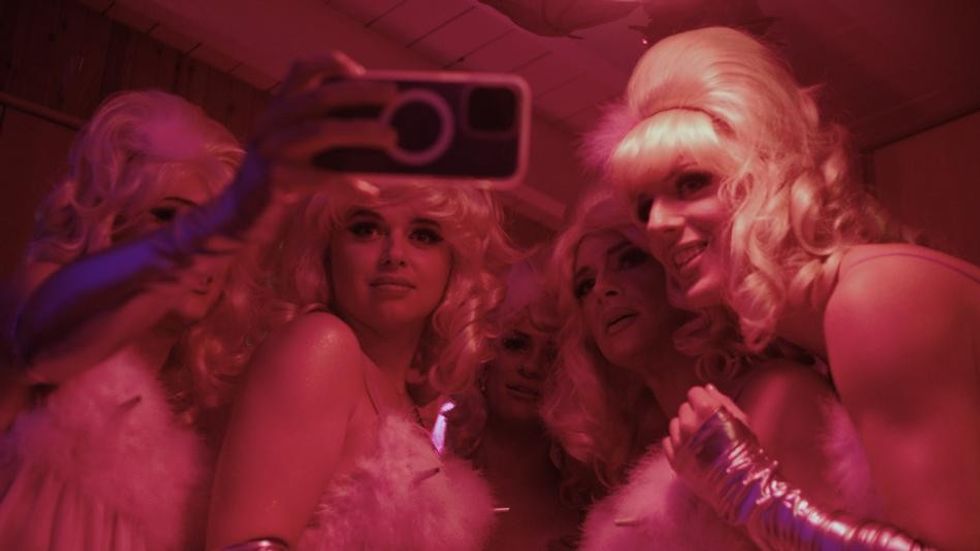
Eric Schleicher (DP), Blake Pruitt (Editor) | A House Is Not A Disco
Eric - "We were documenting on an island with no roads so choosing to film with a larger camera, prime lenses and static frames was difficult when it was a 25 minute walk between locations. Ultimately, it was worth it for the final look of the film."
Blake - "We had about 140 hours of footage, filmed over the course of a year, to work through. Our director Brian J. Smith created detailed story and character outlines with timecodes and quotes so I was never building a scene completely from scratch."
Eric - "Find people who believe in your idea and make the project any way you can."
Blake - "Be open to jobs that may not seem like a 100% fit with your vision of your career—they can sometimes lead you to surprising people and places. But also know when to say no or walk away from something that isn’t working."
Niamh Sauter-Cooke (Writer/Director) | A Rotten Woman (Die Verdorbene)
"Funding was the first major challenging to making the project. Although the film was made on as low a budget as possible, we were committed to paying everyone on the project (yes, that includes assistants!) a small contribution for their work. That adds up quickly. Another good chunk of our budget went into the special effects. We ended up submitting an application to our local film funding body, a risky proposition since they usually funded feature films and tv series.
A few months after submitting our funding application, a woman approached me at a film festival in Germany and told me, half-jokingly, that I'd "ruined her life". She then pulled up her sleeve and showed me the raw red skin of her arm. It turns out she worked for the funding body and had been responsible for our application. After reading my script (about a woman who finds mushrooms growing on her body), she immediately came down with a horrific full body rash. Her doctor was unable to explain where it had come from. Luckily, she really liked the script and ended up defending our project to doubting voices on the funding board - desperately resisting the urge to scratch her painful skin as she did so.
After we got the money, everything went pretty smoothly. Everyone was excited to work on a project that was "a bit different" and there was a real enthusiasm on set. A lot of long-term collaborations were born there."
"Figure out which collaborators make you feel inspired - and which make you feel depressed. If you want to get a project off the ground, you're going to have to put a lot of time and effort into pitching the project to funding bodies and investors, as well as attaching cast and crew members. Find the people that inspire you to believe in your project and remind you why you're doing this in the first place. And make sure you protect your mental health."
Shannon Walsh (Director) | Adrianne & the Castle
"There are so many stories to tell for this film but I’ll focus on one of my favorites!
From the early days of conceptualizing how we would make the film, Laurel Sprengelmeyer and I imagined it to have musical elements. Adrianne loved musicals and created and performed many herself.
Laurel, who is the co-creator and co-writer on the film, is also a musician (who goes by the moniker Little Scream). She really brought a musical way of thinking into the film writing from early on in development.
It was a real challenged to figure out how to make visual the fantasy world that was inside Alan's head the he built with Adrianne. The moment when Alan first saw Adrianne in 1965 was a life changing moment for him, and we knew we wanted to capture that somehow. We started to develop an imaginary dream-world sequence based on what Alan had told us about how he felt at that moment. Alan described how he saw Adrianne as an angel, floating down the sidewalk. Laurel and I talked a lot about how to create such a magical moment on a low-budget that would still feel fantastical and dreamy.
Our final idea brought together the whole team: from the brilliant costume design and art direction by Nalo Soyini Bruce and Jasmine Anguah, to the camera crew of Pablo Alvarez Mesa and Kristen Brown, who used all these fun filters and prisms to create in-camera rainbow effects.
When composer Richard Reed Parry (member of Arcade Fire and composer for films like Iron Claw) got involved, he took our ideas to the next level and created this otherworldly musical soundscape. Richard joined us on set for the shoot to guide the musical elements. Both actors we cast (SLee and Nathan MacDonald) were also great singers. (Fun fact: SLee actually is an off-Broadway musical performer). It was incredible to be doing live musical numbers on location, especially in a documentary!
In post-production, this whole scene was catapulted to the next level when composer and soprano Raquel Acevedo Klein worked with Richard to create the vocal arrangements and music for young Adrianne. I still get goosebumps when I hear it. It was an incredible challenge, and a scene that every department had a hand in creating. I’m so thrilled with how it turned out and how everyone worked together."
"Run towards your fear, dream larger and embrace failure! As Adrianne says, "reality is for those who lack imagination," and as Alan says, “It all starts with a dream, so dream big!”
Jano Pita (Director) | Apotemnofilia
"All special effects are handmade, we didn't use digital at all. For the story I wanted to tell it was essential that everything was like that, I wanted to capture the spirit of the films of the 70s and 80s. That was quite a challenge because I had never shot anything that needed so many practical effects, and it was quite an adventure. I was lucky to work with a magnificent FX team that made everything very easy."
"They should do what they want to do. They should have fun and tell the stories that really interest them. The short film world is the best place to try new things and take risks, and the only way to do that is to do whatever you want."
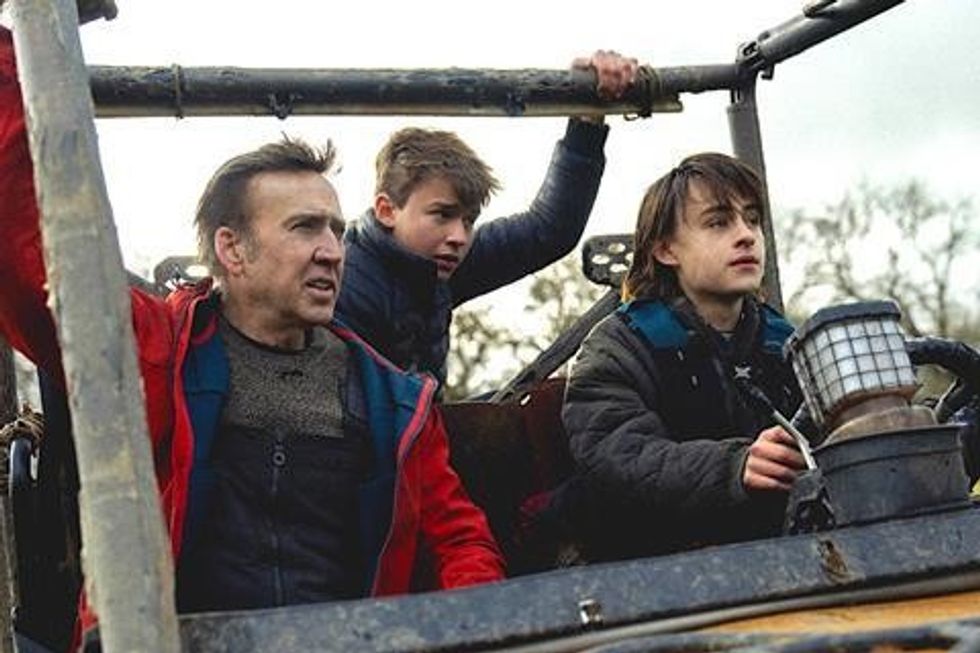
Benjamin Brewer (Director) | Arcadian
"We shot the entire film in 20 days, but more accurately around 200 hours. The script called for a handful of difficulties—action, motion capture, driving, babies, a dog with his own story beats. ARCADIAN is my second film, and I think if it had been my first I would’ve had a tougher time with it. I would've been precious. But on this one, I treated it like a challenge: can we get this done in the time we have, and can everyone be proud of what they did? The answer was yes and yes."
Eliza McNitt (Writer/Director) | Astra
"During production a groundbreaking scientific discovery suddenly changed the entire evolution of our story. Astra is a Mixed Reality experience about the search for life in the Universe and beyond. You embark on a quest to find the key ingredients for life on planets and their moons.
When we began making the experience, all six elements that are key to the signs of life had never been detected in our Solar System. And then in June — in the midst of production — the final missing element was detected for the first time in Enceladus’ ocean. I was stunned. Besides the unprecedented implications for science, it also meant we had to change our narrative. And fast. So we had to adapt and construct an entire new moon to include in the journey."
"When someone tells you your idea is impossible, you’re probably on the right path."
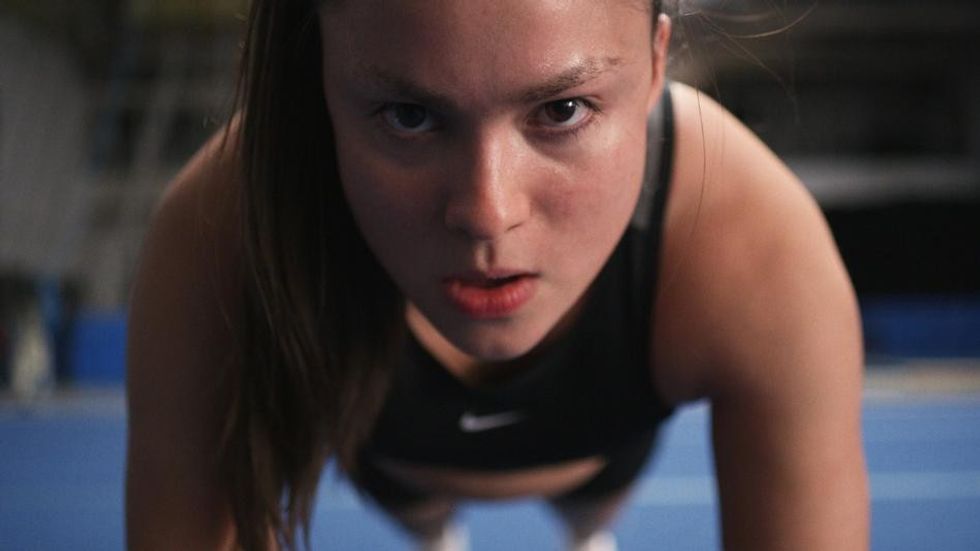
D.W. Waterson (Director) | Backspot
"Our finale number is a one-r of a cheer routine, we had a steadicam that was choreographed into the number as the team performed stunts and pyramids. It had to be a flawlessly blocked routine between performers and the camera operator, to ensure the camera was invisible from shadows, but not so invisible that the cheerleaders crashed into them while tumbling. It took us twelve takes that day, to make sure the lights, movement, blocking and performance aligned perfectly—what made it into the film was our twelfth take."
Keep problem-solving until you get the shot that you want. You don’t need the most expensive equipment, but you can be endlessly creative. Creating a film can be like going to battle, and you need to make sure you are bringing on teammates who will see your vision, uplift you, and help you problem-solve until you achieve it. You know what you see in your mind, and it’s your job to make it a reality.
Shaun Seneviratne (Writer/Director), Joe Violette (Editor), Molly Scotti (DP) | Ben and Suzanne, A Reunion in 4 Parts
Shaun - "Do not wait for ANYONE to give you permission! Do not be discouraged by the rejection by gatekeepers! Make a movie for whatever money you have access to! Get your community involved (closed mouths don't get fed). There is no perfect moment to start—give yourself a date, push the rock over the hill, pay that first check; everything else will follow. Work with urgency. Don't overthink. Be concerned more with "how" than "why." Work with people you love, that you feel supported by. Stay open, avoid rigidity. When working on a low budget, understand the aspects that you need to control and be adaptable to the circumstances you can't afford to control. WATCH ALL KINDS OF MOVIES (stoned)—you never know where inspiration is going to come from and weed will dissolve any walls in your thought and lead to creative connections that might not be seen otherwise."
Joe - "Develop and enjoy your craft by making art with your friends."
Molly - "My advice would be not to get too caught up in what equipment you’re using, and to focus more on form. It is easy see a lack of resources as a disadvantage, but often times it just means you have to be more creative with your solutions. Independent filmmaking is full of innovation and excitement, something that can often be lost when you have everything provided for you."
Abteen Bagheri-Fard (Director) | Benjamin Earl Turner - 'Headspace/Bent'
Challenges:
"This video was made fully independently, no record label. So getting it off the ground and finding money was a challenge. Once we were on set, it was surreal traveling around Los Angeles with a 7 foot tall creature, Habib, engaging in shootouts, car chases, and runs to the liquor store. Everywhere Habib went, people wanted to meet him. It almost felt like we were in a demented theme park."
Advice:
"Believe in your own ideas. If someone else doesn't see the vision, that doesn't mean you shouldn't make it. A lot of people didn't understand what this video was before it was filmed."
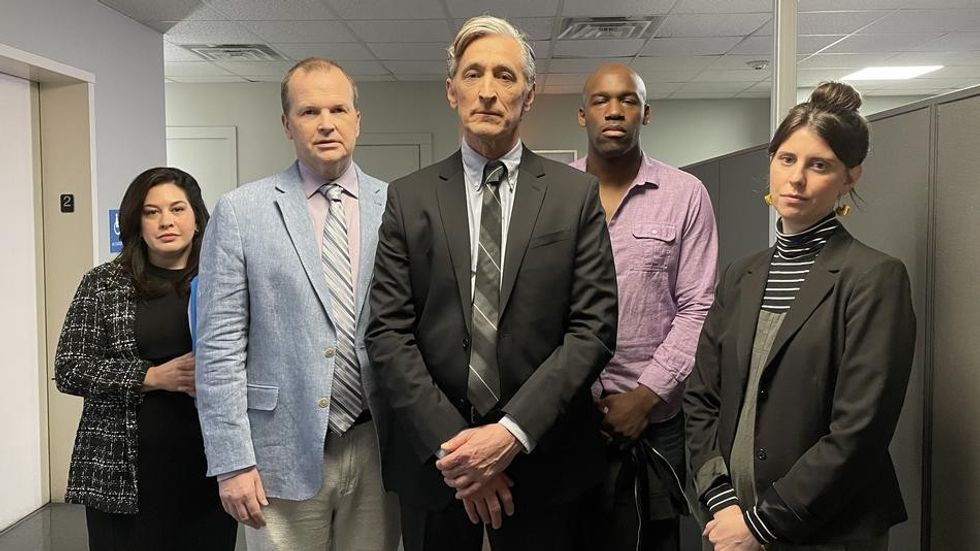
Jack C. Newell (Director/Producer) | Bettendorf Talks
"We filmed in the Quad Cities on the Iowa/Illinois border. As TJ says: It was dreamy shooting it in the Quads. The whole cast and crew stayed at the same lodge-y hotel. The cast took dinners together at the end of shooting days in a forgotten room at the end of a long hallway with meals from the only restaurant still delivering. The shooting days were rewarding as hell. Everyone, in every position, was kind and professional and fun. It was a joy to start each day and really gratifying at the end of the day to have watched people do such good work. I loved it and would love to do it a bunch more times."
"Don't give up—tell great stories."
Eva Orner (Director/Producer) | Brandy Hellville & The Cult of Fast Fashion
"It was quite difficult finding people to be in this film as it's an expose and people are understandably afraid to speak out. The women who appear in the film are so brave and I have so much admiration for them."
Advice:
"Make a film. Write a script. It can be short, cheap, but make, experiment, try, fail and succeed. Just get out there!"
Kailee McGee (Director/Writer/Producer/Editor/Lead) | Can
"The biggest behind-the-scenes story is that I made this film about me navigating treatment for cancer while I was in the middle of treatment for cancer. So, it was all of your standard indie blood, sweat, and tears with no money and long hours but plus cancer. Looking back, that was pretty insane. But, making movies and being on set is my bliss place; it's what gets me out of bed in the morning. Being on set with my closest buds and collaborators making a film brought me back to life."
"Making independent films is the hardest thing I have ever done. I am in awe of each indie project that gets made. Every time I finish a film, I swear that's the end of me making movies without bigger support and resources. Then jump cut to six months or a year later, and I am putting together a script and a deck and convincing my friends and artists who inspire me to help me make miracles happen and create a whole something out of nothing. Make your thing. Finish your thing. Share your thing. Repeat."
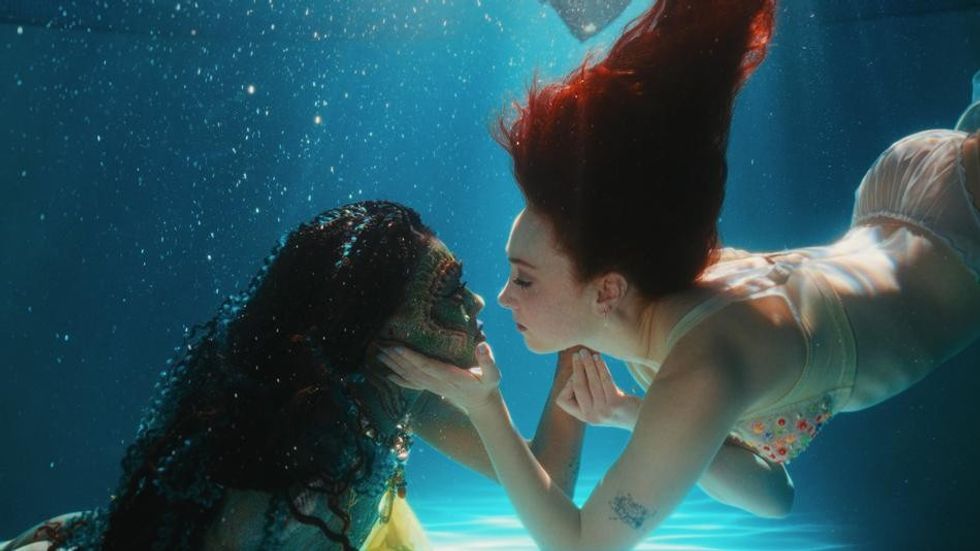
Hadley Hillel (Director) | Chappell Roan - 'Casual'
Challenges:
"The artist and I developed the concept together over 3 months, worked incredibly collaboratively—pulled visual references together, she did her own makeup and hair design. I spearheaded designing the Siren with our incredible prosthetics makeup artist and worked with our costumer to come up with the Siren's costumes—this the first time I've ever worked with complex creature prosthetics, which had to be fully waterproofed for the underwater scenes.
Major challenges included shooting a prolonged underwater kissing sequence, filming the final moment of the Siren pulling a man underwater in only one take, and building a theatrical fantasy underwater set in a small three car garage."
"Never take your film's setting for granted—there's always a way to build the world of your film around a character to further emphasize their journey. Start with the character, then build a world around them that best serves their character arc. Also always challenge yourself to make the third choice—not the first thing that comes to mind, not the second, but the third is where you get specific enough for the story to resonate in a unique and universal way."
David Altrogge (Producer/Director) | Clemente
"Making the film took almost 5 years. We were interrupted by the Pandemic and funding issues."
"Yes. Don’t wait for a green light from others. Green light your own projects."
Nicole Riegel (Director) | Dandelion
"My film is a music movie and so we were essentially making an album alongside a movie. A music movie is a different process and required me to call on a very different directing skill set to bring the music to life. There was a songwriting period that came first. We did live music takes and pre-records. Pre-records happened in New York, Kentucky, and Nashville.
The writing and recording of the film's music was like making an additional film at the same time. A lot of people from vocal coaches to engineers were involved in making everyone sound their best. It helped enormously that KiKi and Thomas, and the rest of the cast were already fantastic vocalists, and that one of our producers, Adam Cobb, plays different instruments and has a strong understanding of the music recording process."
"Love the process and block out the noise. The rejection rate is extremely high and so much of filmmaking and the film industry is beyond our control. Focusing on the work and loving your process of making that work is something that will always be in your control."
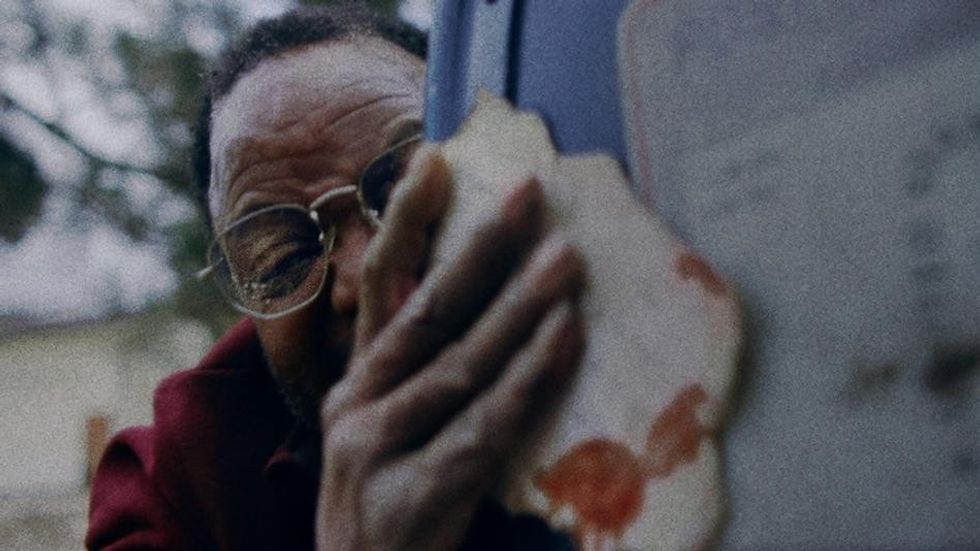
Kyle McConaghy (Director), Joe DeBoer (Writer) | Dead Mail
"While we didn’t want to root the film in a specific historical place, we wanted to create an authentically unsexy, pre-cell phone era midwest. We were committed to filming it in central Illinois, but we found the period props, production design talent, and existing sets that are in Los Angeles actually made it cheaper to film here.
We also strived to be somewhat convincing with the analog synthesizer technology. Rosen Sound here in LA was so helpful and gave us some good resources, which helped as we crafted our own fake prototype synthesizer from the carcass of a few different broken synths and some wood and stain from Anwalt Lumber."
"We are continuously looking for advice ourselves. We spend as much time as possible gleaning from the experiences of other filmmakers and artists (including a healthy dose of NFS) and are grateful to have so many resources to learn so much.
Aside from that, we have benefited so much from consistent collaborations. We have worked with Sterling Macer Jr, the star of the film, in four films now with a couple others coming soon. Our producer, Zachary Weil, has been a constant collaborator and was so helpful in every regard, but most notably shaping the third act. Susan Priver, who plays Bess, was someone we worked with on a prior film and she came on as a star and producer of this film. And the two of us, Joe and Kyle, became friends before the heralded release of Deep Impact.
We are so grateful for everyone who is willing to give their time and talent to these films. So the simple, unoriginal advice: value those friendships you form on set and find the people you want to work with."
Shannon Triplett (Writer/Director/Producer), Nico Navia (Cinematographer) | Desert Road
Shannon - "If you're ever thinking of making a film in June in the desert I have one piece of advice for you: don't do it. We were originally set to shoot in February—a wonderful time to shoot a desert film, but unfortunately our shoot was pushed to June and it was brutal for our cast and crew.
The desert is also an odd place, and we experienced that in full force on Desert Road. It never rains in June in the California desert unless you're trying to film there. And then it rains. Multiple times. A freak wind storm? Yes, we had two of those. A heat wave? Yep, we had one of those, as well. I've never been on a film which had so many unusual challenges, but you would never know it when watching the film. That's a testament to the incredible cast and crew—everyone made sure the production challenges were just challenges to overcome so the film was never creatively compromised."
Nico - "Our film was full of hurdles but the biggest challenge we faced throughout production was the environment in which we were shooting. We filmed in the middle of summer in the California desert. On most days the temperatures would linger around 110 degrees. This tested the resilience of the crew and our equipment, somehow we prevailed! Another unique aspect of our shoot was working under the natural light of the moon. Our camera was so sensitive that we couldn't have any other source of light around us as it would cast unwanted light on our characters. Finding a place to shoot 360 degress in which you don't see any distant lights is almost impossible. Our location, grip and art departments went to great lengths to eliminate as much of them as possible. In the end our VFX team did the rest."
Shannon - "We fall in love with movies because of great stories and great characters, and it's easy to forget that when you're making hundreds of quick decisions on a film. Don't get caught up in the technical aspects of making a film—just focus on the story and the characters."
Nico - "I think we took a big swing in using only moonlight for our night scenes. Even though we did extensive tests, I didn't really know how those sequences were going to blend into the rest of the film. I was afraid it would be distracting and too peculiar. In the end I was very happy with the results and I think it works well for the story. My advice to aspiring filmmakers would be to not be afraid to take chances with their work. The beauty of the technology and knowledge we have nowadays is to find new ways to tell stories and help evolve our storytelling techniques."
Bess Kargman (Director/Producer) | Diane Warren: Relentless
"If there is any other profession you like as much as filmmaking, go do that instead. The only ones who survive here are the ones who cannot envision their lives following any other path. Also, don’t disrespect jobs at the absolute bottom of the ladder. In that (bottom feeder) role you actually learn the most. Lastly, your film is probably still too long when you think it’s finished so get two fresh pairs of objective eyes to critique and don’t be defensive. Oh and one more, you can lose an audience in the first 10 minutes so even if you have to recut the first 10 min three full times, it’s critical."
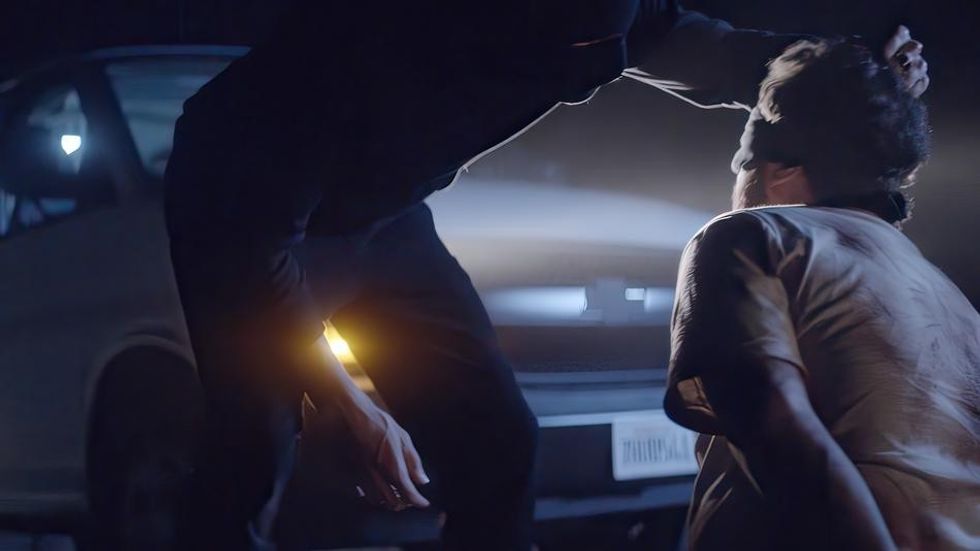
Jonathan Ignatius Green (Director) | Dickweed
"This is always the toughest question. Everyone has their own unique journey. I suppose I would say put as much time and energy into learning the craft of storytelling as you do the craft of cinematography or lighting or editing, etc. Storytelling is a craft, but it's harder to learn and takes more patience. As the tools and techniques of the visual craft are more democratized, it will be a command of storytelling that differentiates your work from the crowd. I know. Everyone says that, but it's true.
Youtube videos about how to achieve the A24 cinematic look are a complete joke. Cause the thing that makes A24 films stand out is not the "look", it's the dimensionality of the storytelling. So work on that as many hours as you obsess over the lenses or camera you wish you had. Make a cheap documentary. Write a screenplay. Write five of them. Spend as little money on each project as possible. Don't worry about production value. Worry about story value. Once you get a handle on that part of the craft, then go all in on one big project.
Don't spend any time worrying whether or not you're talented. It's a cheap and overused concept. Most of talent is earned by putting in the time. My formulation of talent is taste plus craft plus imagination. And all three of those can be built and improved. Okay, now you got me going. I leave it at that. "
Anthony Saxe (Director/Writer) | Dissolution
"The performers in Dissolution are my parents, who are not actors. We built the production and visual language of the film with the knowledge that they would have difficulty with the more technical aspects of acting. Being deliberate about framing and not moving the camera allowed them to stay in the moment without worrying too much about marks, angles, or repeating actions for continuity."
"Know what your film or script is and have conviction in that. Listen to those close to you who understand what you’re trying to do, but be firm about the things that are important to you. Having said that, I would not take any career advice from me."
Sara Zandieh (Director) | Doin' It
"It wouldn't be an indie film without challenges! These hurdles usually stem from budget limitations. Despite this, we managed to make a big movie on a small scale because we had a great team who were resourceful and crafty. We averaged 6 pages per day so we had to move at a TV pace. I had directed some TV before so I leaned on those skills. Episodic directing makes you very efficient! So the pace was definitely a challenge because we had to move a mile a minute. Fortunately, I had a great cast led by the wonderful Lilly Singh. Our entire cast was focused and dialed in which really helped production.
Another significant challenge was finding our locations. Comedies, with their frequent scene changes, demand a variety of settings. Finding our hero high school proved to be particularly daunting, especially since we needed to film while school was still in session. However, my production designer (Peter Costco) and his team rose to the occasion, transforming select areas of the school into convincing sets. Their dedication and hard work truly paid off. "
"Filmmaking is something you learn through hands-on experience and practical application so get out there and create!"
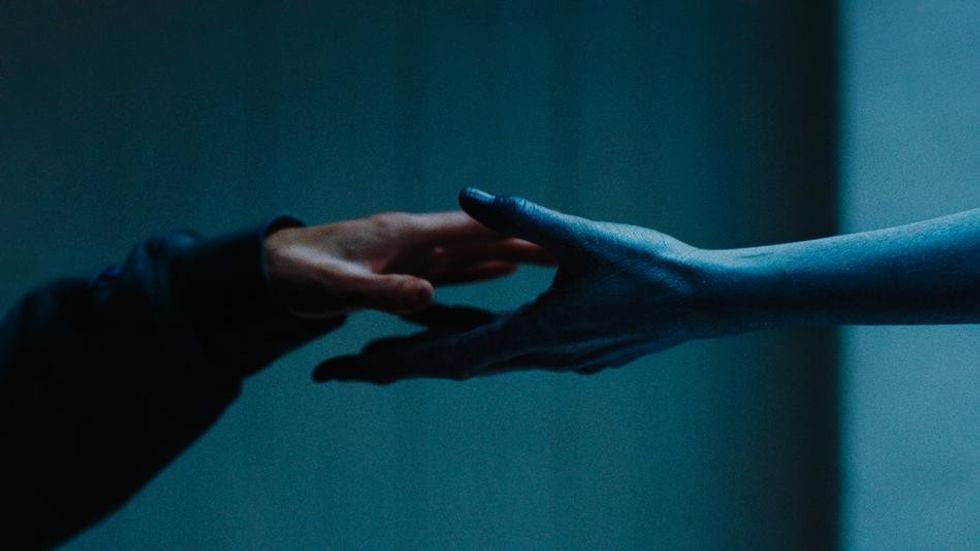
Elisha Christian (DP), Benjamin Finkel (Director) | Family
Elisha - "A crucial story point takes place in the family’s basement and then expands out to a much bigger open space, but the house we chose for the film didn’t have a basement. Production designer Olivia Peebles and her crew actually had to build a basement set in our production office, which was an old motorcycle dealership. The basement opens up to a big, otherworldly space in the story, so we basically used every square inch of that building to fit our makeshift set."
Benjamin - "On paper, this movie was impossible. It’s a small indie horror film about an 11-year old, featuring stunts, animals, and special/visual effects. But thanks to our really wonderful team, we were able to create space for our actors to give these incredibly demanding, specific performances. It was a real high-wire act, but some of the most beautiful moments in the film were captured just minutes before we had to wrap for the day. "
Elisha - "Find your tribe. Take risks. Finish your projects, even when they turn into something completely different than what you set out to make."
Christina Clusiau & Shaul Schwarz (Directors/Producers/DPs) | Fly
"The unique challenges on this production were the fact that neither of us were BASE jumpers or wingsuit pilots. So we spent a lot of time climbing mountain or accompanying the fliers to the exit point only to to walk back down after they exited off the cliff. They were able to climb up, sometimes taking a couple hours and jump off to fly to the ground in a few minutes, which was incredible to watch. But, we, after filming them exit, would the start the long trek back down. It was challenging and at times taxing with all the gear but to watch them fly made up for it all."
"Strive for access and to get deeply into the story you are telling. It makes a world of difference when you have the opportunity to really spent time with the lives you are filming. And, if the project allows, take your time. Because good things do take time. Time to develop, time to creatively think, time to process, time to rework what is not working."
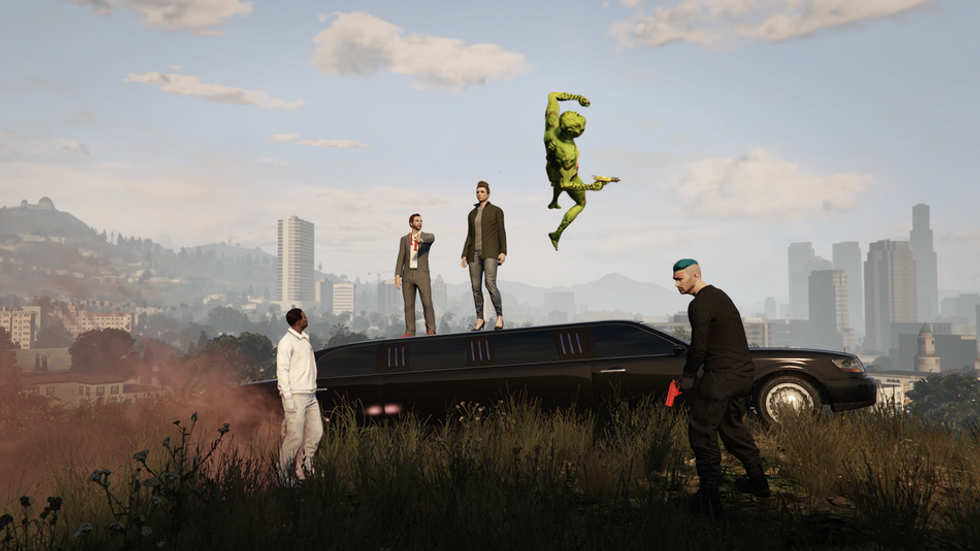
Pinny Grylls (Director/Editor) | Grand Theft Hamlet
"We had to work out a way of recording the different layers of sound and keeping them as separate as possible for the edit. Improving the quality of voices was a challenge. But in the end we went with the gaming audio aesthetic. The sound mix was a challenge however!"
"Ignore the naysayers. And practice story telling - a lot. Documentary making is a really good way of doing that as fiction is expensive to make. Even better make a film in a computer game...Shoot edit repeat....til you are good at it."
Robby Baumgartner (DP) | I Wish You All The Best
"Probably the most challenging thing besides the tight shooting schedule was that IWYATB takes place in around Raleigh, NC, however we shot 95% of the film in Los Angeles, CA. That presents challenges for all the crafts as one would expect. For me as the DP the challenge was not giving it away that were not in North Carolina, while keeping the film open and not restricted to solely shooting interiors. Fortunately Ace Entertainment found the funds to get us a few days of filming in North Carolina albeit with limited resources in both equipment, crew and time. For various production related reasons we needed based the North Carolina in Wilmington which doesn’t exactly scream Raleigh, Tommy and I pushed hard for a day of shooting in Raleigh because it would really help to give the audience a feeling that we were truly in the heartland of North Carolina. Production agreed to let us do it, but the only if we did it super stripped down. It was me, Tommy, and number 1 on the call Cory…that’s it! No production, no AD, no crew!
I shot on my Sony A7Slll on a handheld gimbal. Not my ideal choice, but the only way we would be allowed to go. We also managed to get a great drone operator Blair Johnson to come out for one the day to shoot a couple of crucial wide reveals of downtown Raleigh. Besides that terrifying (I’m setting myself up for failure) day of shooting, shooting a film in 23 days is always a huge challenge. I try so hard to give the director and actors the most amount of time possible. Each day of this film I came to work with a stack of overhead schematics and shot list that Tommy and I created before we started filming and distributed it to any one on the crew that wanted it. Every second of the day is so precious to me and that at least gives everyone a very solid starting point and path forward, and a direction. Even if Tommy and I change the blocking after the rehearsal, everyone on the crew knew what we need to get done that day with a visual roadmap in their hands, so they could stay ahead things and keep the circus rolling."
"If you’re a writer/director, write a script that you can shoot within the means of your budget. Tommy Dorfman did that extremely well. Second, prep hard and long. Third, show up everyday and be kind and giving of yourself, treat everyone on set with love and respect. Solve the problems and don’t creat more by being defensive. Filmmaking is a unique form of art, the most collaborative art form know to us, done in a compressed timeframe, its not for the faint of heart. Everyone on a film work in tight spaces, under the immense stress of time and performance. It’s also the most amazing thing to do for a living. I’ve meet some of the mostly incredible human being in my life on film sets. Good luck!"
- Daniels Talks AI and How They Pulled Off ‘Everything Everywhere All at Once’ at SXSW ›
- Explore the Anatomy of a Time Travel Thriller With This SXSW Filmmaker ›
- SXSW Filmmaker Jenny Carchman Talks the Evolving Documentary Form ›
- Alex Garland Talks About Shooting ‘Civil War’ on the DJI Ronin 4D at SXSW ›
- Mark Duplass is Betting on the Future of Indie Film Being on TV ›
- Taking Horror into the Silent Era with SXSW's 'Azrael' ›
- Daniels Talks AI and How They Pulled Off ‘Everything Everywhere All at Once’ at SXSW ›
- Exploring the Cameras Behind the 2024 SXSW Film & TV Festival ›
- SXSW Announces Award Winners from the 2024 Film & TV Festival ›
- Dev Patel Talks ‘Monkey Man’ and Action Cinema at SXSW 2024 ›
- Behind the scenes with the Editor of “Arcadian” ›
- How Cinematographer Veronica Bouza Shot Two SXSW Projects | No Film School ›
- Costume Designer Richard Cooke Takes Us Through His Work on 'Joan' | No Film School ›













